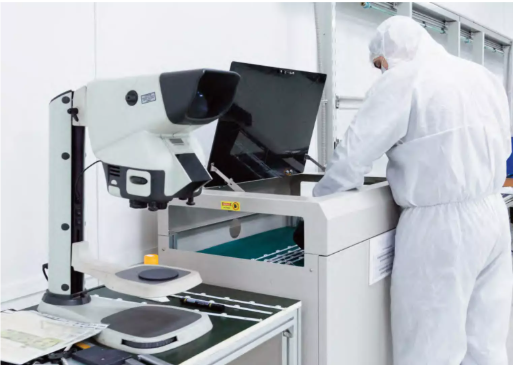

News
The Expanding Scope of Biocompatibility in Medical Devices
Date: Sep 23 2025
Publication: BioVoice
Vamsi Ravali Pattisapu highlights how biocompatibility is evolving into a proactive, Al- and data-driven design approach to create safer, smarter, and ethically responsible medical devices
Biocompatibility-the ability of materials to interact safely with the human body-has long been a cornerstone of medical device development. Traditionally assessed through static lab assays and animal testing, the field is now undergoing a transformative shift. Emerging technologies such as artificial intelligence (AI), digital simulation, and data-led compliance frameworks are redefining how biocompatibility is understood, tested, and regulated.
This evolution is not just technical-it's ethical, strategic, and deeply patient-centric. As the demand for safer, smarter, and more sustainable medical devices grows, the industry is embracing a new paradigm where predictive modeling, automated validation, and proactive compliance are central to innovation.
Al and Digital Simulation: Predicting Biological Responses
Biocompatibility testing is undergoing a major shift-from traditional animal models to Al-driven predictive modeling and digital simulations. These technologies enable earlier, more accurate assessments of how materials interact with biological systems, improving safety and reducing reliance on in vivo testing.
Key areas include organ-on-a-chip and 3D tissue models replicating human biology, allowing early detection of adverse reactions; Al algorithms, powered by high-throughput screening, analyzing vast datasets to predict immune responses, cytotoxicity, and long-term compatibility; digital simulations accelerating desigh iteration, enabling virtual prototyping under varied physiological conditions.
The global medical simulation market reflects this momentum, projected to grow from $1.65B in 2024 to $4.17B by 2030. As multimodal Al systems like the AI-Driven Digital Organism (AIDO) emerge, capable of simulating biology from molecules to entire organisms, biocompatibility is evolving from a reactive checkpoint into a proactive design principle. This transformation empowers developers to engineer materials that actively communicate with biological systems, enhancing safety, accelerating innovation, and aligning with both regulatory and ethical standards.
Despite the promising advances enabled by Al and simulation in medical device development, key hurdles persist such as limited data resources, where the absence of extensive, high-quality datasets on material behavior and biological interactions hampers model precision. Strengthening collaboration across institutions is vital to build, harmonize, and share robust data collections. To gain trust and regulatory approval, AI and simulation models must undergo thorough validation against empirical data, which proves to be challenging. Techniques like molecular dynamics simulations require significant computing power.
The global medical simulation market reflects this momentum, projected to grow from $ 1.65B in 2024 to $4.17B by 2030."
Optimized algorithms and scalable access to high-performance computing are critical to manage these demands. Merging Al with simulation provides deeper insights into biological responses, but it also calls for innovative approaches to unify data across different scales and formats, making integration needs complex These challenges emphasize the need for collaboration across disciplines-data scientists, engineers, clinicians, and regulators. As AI advances, biocompatibility is becoming a proactive design strategy, with materials engineered to interact intelligently with biology. Yet, human expertise remains vital to interpret Al insights, validate predictions, uphold ethics, and make context-driven decisions. This human-Al partnership ensures innovation is safe, accountable, and aligned with real-world needs, shaping a future where materials are not just tested, but truly understood.
Data-Led Material Behavior Analysis: Ethical Compliance by Design
In today's rapidly evolving medical device landscape, ethical compliance is no longer a final checkpoint-it's becoming a foundational design principle. At the heart of this transformation is data-led material behavior analysis, a predictive approach that uses Al and large-scale datasets to anticipate how materials will interact with human biology.
Rather than relying solely on post-production testing, developers now use data to guide decisions from the earliest stages. This shift not only enhances safety and performance but also aligns with ethical imperatives by reducing animal testing and promoting transparency.
Key elements of the approach include Material Property Databases which capture critical attributes like surface energy, porosity, and chemical capture critical attributes like surface stability, Biological Interaction Profiles which link material characteristics to biological responses such as cytotoxicity and inflammation, Post-Market Surveillance Data that provides real-world insights into long-term material performance across diverse populations and Omics-Driven Insights that Integrate genomics and proteomics to predict molecular-level interactions.
The benefits of predictive, ethical design include early identification of high-risk materials, reduced need for animal testing, faster regulatory approvals and more inclusive and equitable device performance While Al plays a cèntral role in analyzing complex datasets and generating predictions, human oversight remains essential. Experts are needed to interpret results, validate models, and ensure ethical standards are upheld-especially when Al outputs are ambiguous or context-dependent. As healthcare becomes increasingly data-driven, this intelligent, collaborative approach ensures that every material used in medical devices is not just tested, but truly understood.
Design Verification & Validation (V&V): Automation for Safety
In the tightly regulated medical device industry, Design Verification and Validation (V&V) is critical to ensuring product safety and performance. Verification checks whether a device meets its design specifications, while validation confirms its effectiveness in real-world conditions. Regulatory bodies like the FDA and EU MDR mandate rigorous V&V processes, with standards such as FDA 21 CFR Part 820 and ISO 13485 forming the backbone of compliance.
As medical devices become more complex and software-driven, the industry is increasingly embedding V&V throughout the product lifecycle and turning to automation to enhance reliability and efficiency. Automated testing not only speeds up development but also improves consistency and supports smoother regulatory submissions.
Modern V&V Practices Include automated testing, where Al and software tools streamline functional and non-functional testing, risk management through early identification and mitigation of potential hazards, Human Factors Engineering (HFE), which involves designing for usability to reduce operator error and cybersecurity & interoperability testing which is essential for connected devices and Software as a Medical Device (SaMD).
Despite the rise of automation, human expertise remains indispensable. Professionals are needed to define test parameters, interpret complex results, and evaluate edge cases that Al may miss. This human-Al collaboration ensures that safety benchmarks are consistently met across diverse product portfolios.
As connected health platforms and SaMD continue to grow, robust V&V frameworks are more important than ever-not just for regulatory approval, but for protecting patient health in an increasingly digital healthcare environment. Ultimately, integrating technological upgrade-it's a strategic automation into V&V is not just a imperative for building safer, smarter, and more resilient medical devices.

Toward a Safer, Smarter Future
The convergence of Al, simulation technologies, and data-led compliance is redefining biocompatibility as a dynamic, patient-centric discipline. As the industry embraces these innovations, the future promises safer, more personalized medical devices that not only meet regulatory standards but also adapt to evolving patient needs. As Al evolves, biocompatibility becomes a collaborative process-where machines, materials, and human expertise work together. Key priorities include integrating multimodal clinical data into Al models, enhancing transparency and interpretability of Al decisions, building inclusive datasets for diverse patient populations and strengthening regulatory confidence in Al-driven methods.
The future of medical device innovation is rooted in intelligent ecosystems where human expertise steers Al-driven progress. These systems ensure that devices not only align with biological systems but actively enhance them. From predictive analytics to automated testing, the evolving landscape of biocompatibility highlights how technology is ethically, efficiently, and intelligently transforming healthcare.
Author: Vamsi Ravali Pattisapu, Delivery Manager and Regulatory Practice Head, Tata Elxsi
Vamsi Ravali Pattisapu brings over 17 years of expertise to her leadership role at Tata Elxsi, where she oversees delivery operations and leads the regulatory practice, driving compliance excellence across projects. Her strong engineering background is built on extensive experience with medical device R&D. Vamsi has been instrumental in steering cross-functional teams toward delivering Innovative and compliant healthcare solutions.






